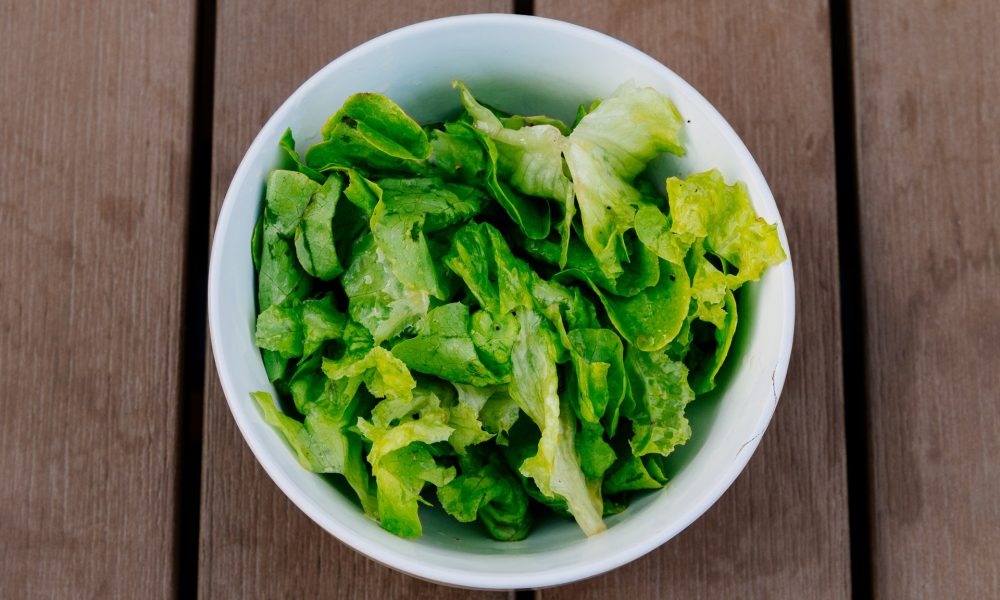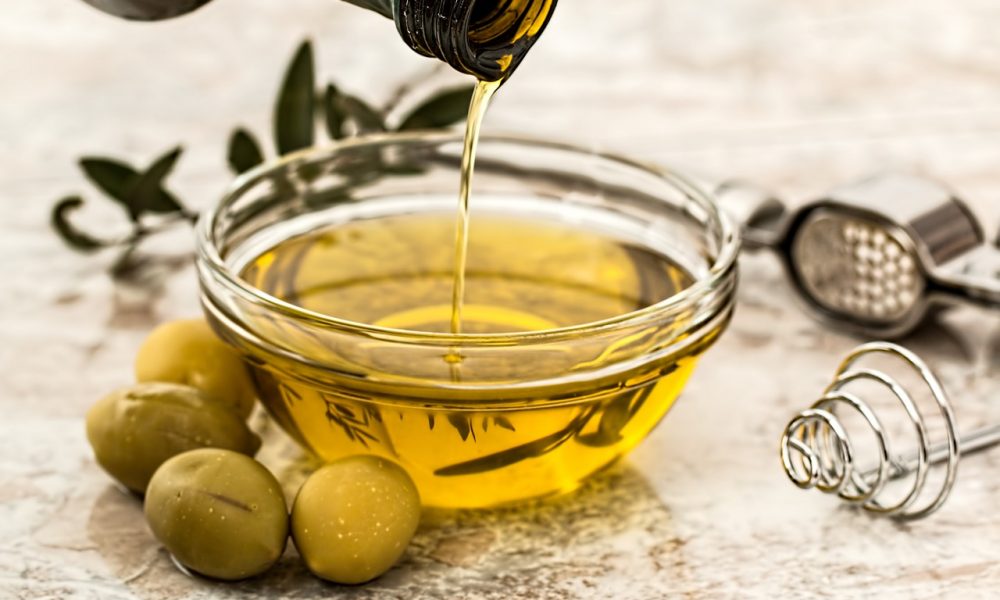
How Long to Rest Between Sets for Bigger Badder Gains
How Long to Rest Between Sets for Bigger Badder Gains Rest periods are one of the most misunderstood and unsexy aspects of strength training. However,

Which fat is bad for you? Which fat is good for you? How much fat should I eat? These are the infamous questions that frolic around everyone’s mind as it relates to dietary fat.
Most articles base their fat recommendations on trendy diets or what the latest episode of Dr. Oz concluded. Don’t read those articles and definitely don’t listen to that nutcase Dr. Oz. Instead, in this article, I’ll be breaking down dietary fat based on unbiased scientific evidence.
Here’s the order in which we will discuss the topic of dietary fat:
Fat is an essential macronutrient, meaning you have to eat some of it particularly the fatty acids your body can’t make on its own to sustain certain functions or else you would just eventually die. We definitely don’t want that to happen.
Anyways, fat plays an important role in optimal hormone production, making cell membranes, absorbing certain vitamins, keeping your brain healthy, and many other health functions I’m too lazy to name (1).
We also can’t forget, fat makes our food tastier thus making life more enjoyable. This is why eating a plain potato makes you feel like a basic nobody, but eating the same potato with butter and bacon makes your tongue feel like an utter rockstar.
As you can see, fat does wonderful things for us, but that doesn’t mean fat is entirely innocent.
Fat is also 9 calories per gram making it the most calorically dense macronutrient. This means gram for gram, it has more than twice the amount of calories than both protein and carbohydrates (who are each only 4 calories per gram). It also has the highest variability, so it’s hard to predict how much is used at restaurants.
Fat also has the weakest thermic effect in overweight populations meaning your body doesn’t burn many calories to digest it (2).
Furthermore, on it’s own, fat is generally the least filling macronutrient when compared to protein and carbs (2,44).
The only fatty foods that are filling usually contain other macronutrients. For example eggs, contain substantial protein while avocados contain protein and fiber rich carbs. These other nutrients are what makes some fatty foods filling, but the fat itself, calorie for calorie is not that filling.
Think about it.
Picture a bowl of a mixed green salad in front of you.

If you added 100 calories of lean protein to the salad, you would be able to add about half a cup of chopped chicken breast substantially increasing how filling that salad becomes.
If you added 100 calories of pure carbs to the salad, you would be able to add 2 and a half cups of watermelon to the salad which would also substantially increase how filling that salad becomes.
But if you added 100 calories of pure fat to the salad, you would only be able to add less than 1 tablespoon of olive oil. For the same amount of calories, your salad isn’t much more filling just from a tiny spoon of oil.
So caution is warranted. Overconsumption of fat, even the healthier fats results in the same thing as overconsumption of any nutrient. Weight gain.
This is great if you struggle to gain weight because you can simply eat more fat to quickly boost calories without getting too full.
But if you’re like most people who are trying to lose weight, its crucial to be careful of daily fat intake as it’s easy to overeat.
Still don’t believe me that fat is very easy to overeat? Take any nut butter and weigh out exactly one serving. Chances are it’s way smaller than what you’ve been eating or smothering your snacks in. I rest my case.
Fat intake is an interesting topic.
Bodybuilders who notoriously restrict fat still recommended to maintain 15-30% of energy intake as fat (3,24).
Thus, this should be a minimum for baseline health. However adherence issues are seen in dieters assigned fat intakes of 20% (25).
Furthermore, key anabolic hormones like testosterone in men and estrogen in women are compromised when reducing fat intake from 40% to 20% (26,27,50).
So during maintenance or deficit, the optimal fat recommendation for the average person should be 30-40% of calories. If you’re eating in a surplus like during a bulk, these percentages are more flexible and can be decreased.
So a person eating 2000 calories at maintenance trying to eat 40% would aim for 800 calories of fat per day. Each gram of fat is 9 calories, so this person would aim for about 88 daily grams.
Aiming for 40% is generally best assuming it doesn’t displace too much of other macros you may need.
Females should always consider the higher end of the range though. Fat intake benefits women more than men as their metabolism relies on it more as a fuel source (28).
In fact, low fat diets can reduce female breast size (29). Nobody likes that.
In addition,
Thus, if it’s possible, women should aim for 40% of maintenance energy intake for fat targets to reap and optimize all benefits.
Fat is the macronutrient that’s least impacted by timing. In fact, there doesn’t seem to be any crucial timing requirements in research.
This is contrary to all bros who tell you to avoid consuming fat post workout because it affects nutrient absorption rate.
While fat does absorb slowly, it doesn’t affect other nutrients and has no impact on any relevant markers.
Fat intake doesn’t impact post workout muscle building from protein (34).
It also doesn’t impact muscle glycogen replenishment (stored sugar for performance) in both strength training and cardio (35,36,37).
So eat fat whenever you want, so long as you eat a sufficient amount daily.
Now let’s get into the various types of fat. First, we’ll look at the evidence behind trans fat which is pretty clear on how much we should eat.
Spoiler: Not very much or any at all.
Trans fat is found naturally in deeply small amounts in animal products like meat and cheese. This isn’t a big deal, but artificially made trans fat can be.
Trans fat is industrially made by adding hydrogen to liquid vegetable oils. They were popularized around the 1950s and fortunately have been less popular in recent decades.
The FDA have hustled hard to limit their use in restaurants, but they’re still around in some packaged foods. Most cooking oils don’t have any and can withstand many cooking methods without forming trans fat except for corn oil (47,48).
Just a little bit of trans fat can impact your risk of cardiovascular issues. This study showed just an extra 4.4 g of trans fat per day could increase your risk of heart attack by 23% (4).
Research has pretty conclusively shown trans fat intake increases risk of cardiovascular disease (5).
Margarine or vegetable shortening will be the main culprit when it comes to trans fat. This is why baked goods from grocery stores can be tricky. Frosting and frozen pizzas will also contain some trans fat depending on what kind you buy.
Another thing to note is food labels are able to round down, so some packaged foods will contain trans fat even if the label misleadingly says 0 grams of trans fat. So annoying right?
Do be careful about trans fat intake. I recommend you abstain from artificial trans fat or heavily limit it especially if your overall lifestyle is unhealthy as the risks would be worse for those who aren’t active, have unfavorable body compositions, or possess a history of family heart conditions.
A good rule of thumb is to avoid margarine and to limit heavily processed foods.
Now let’s talk about saturated fat, which is found mostly in foods like meat, dairy, and coconut oil.
Unlike trans fat, where the answer is pretty simple, saturated fat isn’t as clear cut. In fact, saturated fat is probably the most misunderstood fat of them all.
It all started back in 1955, president Dwight Eisenhower had an infamous heart attack which freaked the American public out.
People love to play the blame game and somehow saturated fat immediately became the party to blame despite president Eisenhower having a history of smoking cigarettes. What followed in 1980 was the government issuing dietary recommendations which demonized saturated fat and urged people to avoid it like a poisonous plague.
Saturated fat does increase LDL cholesterol (bad cholesterol), but remember correlation with one aspect does not mean causation with an entire disease or heart attack.
Fortunately, we can fast forward to today where we now know saturated fat is not going to blow up our hearts like our grandparents all thought.
This 2010 meta-analysis showed no significant evidence for concluding saturated fat is associated with heart disease (6).

Four years later, another meta-analysis looking at 76 observational and randomized controlled trials that showed the same thing. Saturated fat is not associated with coronary heart disease (7).
Another study in 2014 showed no association between saturated fat and incident coronary events or mortality even in patients with established coronary disease (8).
Then 2 more years later, another meta-analysis showed that even though saturated fat increased bad cholesterol, it didn’t result in more death (9).
Next is this 2017 study showing the cholesterol risk of saturated fat has been overexaggerated (10).
Then in 2020, we even have a meta-analysis that saturated fat is associated with a decreased risk of stroke (38).
This lines up with other evidence showing saturated fat to have better or neutral outcomes even in people with previous cardiovascular risk (39-42).
Even though saturated fat does not cause heart disease, it still increases LDL cholesterol which is one of the many risks of heart disease. Your entire fat intake shouldn’t be purely saturated fat (11,12,23).
Overall, this is likely confounded by source of saturated fat and population (43). Whole foods like yogurt and meat perform better than something like cheesecake cause duh. In addition, the increase in LDL bad cholesterol tends to be more pronounced in unhealthier individuals (49).
In general saturated is largely a neutral fat (46). Risk may be warranted in unhealthier populations eating uncontrolled diets of processed fats. On the other hand, if your healthy eating a controlled diet with mostly whole sources, you got nothing to worry about.
This then brings me to the final fat, unsaturated fat. While saturated fat is more or less neutral, unsaturated fat is a good fat meaning it has substantial benefits beyond the basic benefits of all fat.
It’s like the annoying golden child of fat that just does everything better than it’s other siblings and so much more.
There are 2 kinds of unsaturated fat, monounsaturated fat and polyunsaturated fat. Both have similar health benefits and are usually alongside each other in unsaturated rich foods like olives, olive oil, avocados, seeds, nuts, nut butters, and fatty fish like salmon.

Unsaturated fat has clear benefits from improving brain health, reducing inflammation, reducing risk of all cause mortality, and preventing heart disease (13,14,15,16).
So it’s highly beneficial to ensure a majority of your fat intake comes from unsaturated sources.
This study tested replacing saturated fat intake with either mono or poly unsaturated fat while controlling for total calories. Both types of unsaturated fat reduced LDL cholesterol levels to substantial yet similar degree indicating very similar benefits (17).
Another neat thing about unsaturated fat is that they are likely produce more favorable body composition if you happen to overeat. Studies show overeating unsaturated fat produces more fat gain than overeating in unsaturated fat when calories were equal (20,21).
Furthermore, simply replacing saturated fat with unsaturated fat acutely improves attentional focus after the meal (45).
So while saturated fat isn’t particularly bad for you, replacing them with unsaturated fat is clearly good for you (18,19,22).
Here’s the final verdict on fat to sum everything up.
That’s all for this one folks. Hope this helps you understand fat better. If you still got questions, email me ([email protected]). Talk to you again soon.
E;, Chappell AJ;Simper T;Helms. “Nutritional Strategies of British Professional and Amateur Natural Bodybuilders During Competition Preparation.” Journal of the International Society of Sports Nutrition, U.S. National Library of Medicine, pubmed.ncbi.nlm.nih.gov/31438992/.
Aragon AA;Schoenfeld BJ;Wildman R;Kleiner S;VanDusseldorp T;Taylor L;Earnest CP;Arciero PJ;Wilborn C;Kalman DS;Stout JR;Willoughby DS;Campbell B;Arent SM;Bannock L;Smith-Ryan AE;Antonio J; “International Society of Sports Nutrition Position Stand: Diets and Body Composition.” Journal of the International Society of Sports Nutrition, U.S. National Library of Medicine, pubmed.ncbi.nlm.nih.gov/28630601/.
Dorgan JF;Judd JT;Longcope C;Brown C;Schatzkin A;Clevidence BA;Campbell WS;Nair PP;Franz C;Kahle L;Taylor PR; “Effects of Dietary Fat and Fiber on Plasma and Urine Androgens and Estrogens in Men: A Controlled Feeding Study.” The American Journal of Clinical Nutrition, U.S. National Library of Medicine, pubmed.ncbi.nlm.nih.gov/8942407/.
Goldin BR;Woods MN;Spiegelman DL;Longcope C;Morrill-LaBrode A;Dwyer JT;Gualtieri LJ;Hertzmark E;Gorbach SL; “The Effect of Dietary Fat and Fiber on Serum Estrogen Concentrations in Premenopausal Women Under Controlled Dietary Conditions.” Cancer, U.S. National Library of Medicine, pubmed.ncbi.nlm.nih.gov/8039147/.
MA;, Tarnopolsky. “Sex Differences in Exercise Metabolism and the Role of 17-Beta Estradiol.” Medicine and Science in Sports and Exercise, U.S. National Library of Medicine, pubmed.ncbi.nlm.nih.gov/18317381/.
Boyd, Norman F., et al. “Effects at Two Years of a Low-Fat, High-Carbohydrate Diet on Radiologic Features of the Breast: Results From a Randomized Trial.” OUP Academic, Oxford University Press, 2 Apr. 1997, academic.oup.com/jnci/article/89/7/488/2526858.
Høeg, Louise D, et al. “Lipid-Induced Insulin Resistance Affects Women Less than Men and Is Not Accompanied by Inflammation or Impaired Proximal Insulin Signaling.” Diabetes, American Diabetes Association, Jan. 2011, www.ncbi.nlm.nih.gov/pmc/articles/PMC3012198/.
Bolhuis, Dieuwerke P, et al. “Salt Promotes Passive Overconsumption of Dietary Fat in Humans.” OUP Academic, Oxford University Press, 2 Mar. 2016, academic.oup.com/jn/article/146/4/838/4584922.
Trexler, Eric T, et al. “Effects of Dietary Macronutrient Distribution on Resting and Post-Exercise Metabolism.” Journal of the International Society of Sports Nutrition, BioMed Central, 1 Dec. 2014, www.ncbi.nlm.nih.gov/pmc/articles/PMC4271664/.
Goss AM;Chandler-Laney PC;Ovalle F;Goree LL;Azziz R;Desmond RA;Wright Bates G;Gower BA; “Effects of a Eucaloric Reduced-Carbohydrate Diet on Body Composition and Fat Distribution in Women With PCOS.” Metabolism: Clinical and Experimental, U.S. National Library of Medicine, pubmed.ncbi.nlm.nih.gov/25125349/.
Tsintzas, Kostas, et al. “Effect of Acute and Short-Term Dietary Fat Ingestion on Postprandial Skeletal Muscle Protein Synthesis Rates in Middle-Aged, Overweight, and Obese Men.” American Journal of Physiology-Endocrinology and Metabolism, 9 Mar. 2020, journals.physiology.org/doi/abs/10.1152/ajpendo.00344.2019.
Burke LM;Collier GR;Beasley SK;Davis PG;Fricker PA;Heeley P;Walder K;Hargreaves M; “Effect of Coingestion of Fat and Protein With Carbohydrate Feedings on Muscle Glycogen Storage.” Journal of Applied Physiology (Bethesda, Md. : 1985), U.S. National Library of Medicine, pubmed.ncbi.nlm.nih.gov/7665416/.
JF;, Fox AK;Kaufman AE;Horowitz. “Adding Fat Calories to Meals After Exercise Does Not Alter Glucose Tolerance.” Journal of Applied Physiology (Bethesda, Md. : 1985), U.S. National Library of Medicine, pubmed.ncbi.nlm.nih.gov/14978010/.
MA;, Roy BD;Tarnopolsky. “Influence of Differing Macronutrient Intakes on Muscle Glycogen Resynthesis After Resistance Exercise.” Journal of Applied Physiology (Bethesda, Md. : 1985), U.S. National Library of Medicine, pubmed.ncbi.nlm.nih.gov/9480948/.
Kang, Zhou-Qing, et al. “Dietary Saturated Fat Intake and Risk of Stroke: Systematic Review and Dose–Response Meta-Analysis of Prospective Cohort Studies.” Nutrition, Metabolism and Cardiovascular Diseases, Elsevier, 1 Oct. 2019, www.sciencedirect.com/science/article/abs/pii/S0939475319303801.
G;, Nettleton JA;Brouwer IA;Geleijnse JM;Hornstra. “Saturated Fat Consumption and Risk of Coronary Heart Disease and Ischemic Stroke: A Science Update.” Annals of Nutrition & Metabolism, U.S. National Library of Medicine, pubmed.ncbi.nlm.nih.gov/28125802/.
Puaschitz, Nathalie Genevieve, et al. “Dietary Intake of Saturated Fat Is Not Associated with Risk of Coronary Events or Mortality in Patients with Established Coronary Artery Disease.” OUP Academic, Oxford University Press, 10 Dec. 2014, academic.oup.com/jn/article/145/2/299/4616071.
Thorning TK;Raziani F;Bendsen NT;Astrup A;Tholstrup T;Raben A; “Diets With High-Fat Cheese, High-Fat Meat, or Carbohydrate on Cardiovascular Risk Markers in Overweight Postmenopausal Women: A Randomized Crossover Trial.” The American Journal of Clinical Nutrition, U.S. National Library of Medicine, pubmed.ncbi.nlm.nih.gov/26178720/.
Yamagishi, Kazumasa, et al. “Dietary Intake of Saturated Fatty Acids and Mortality from Cardiovascular Disease in Japanese: the Japan Collaborative Cohort Study for Evaluation of Cancer Risk (JACC) Study.” OUP Academic, Oxford University Press, 4 Aug. 2010, academic.oup.com/ajcn/article/92/4/759/4597506.
O’Sullivan, Therese A, et al. “Food Sources of Saturated Fat and the Association with Mortality: a Meta-Analysis.” American Journal of Public Health, American Public Health Association, Sept. 2013, www.ncbi.nlm.nih.gov/pmc/articles/PMC3966685/.
M. Ng, T. Fleming, et al. “The Relationship between the Leptin/Ghrelin Ratio and Meals with Various Macronutrient Contents in Men with Different Nutritional Status: a Randomized Crossover Study.” Nutrition Journal, BioMed Central, 1 Jan. 1970, nutritionj.biomedcentral.com/articles/10.1186/s12937-018-0427-x.
Madison AA;Belury MA;Andridge R;Shrout MR;Renna ME;Malarkey WB;Bailey MT;Kiecolt-Glaser JK; “Afternoon Distraction: a High-Saturated-Fat Meal and Endotoxemia Impact Postmeal Attention in a Randomized Crossover Trial.” The American Journal of Clinical Nutrition, U.S. National Library of Medicine, pubmed.ncbi.nlm.nih.gov/32393980/.
Leaf, Alex. “Is Saturated Fat Bad for Your Health?” Examine.com, 24 Feb. 2020, examine.com/nutrition/is-saturated-fat-bad-for-you/.
Song, Juhee, et al. “Analysis of Trans Fat in Edible Oils with Cooking Process.” Toxicological Research, The Korean Society Of Toxicology, Sept. 2015, www.ncbi.nlm.nih.gov/pmc/articles/PMC4609978/.
PhD, Roman Przybylski, et al. “Formation of Trans Fats: During Food Preparation.” Canadian Journal of Dietetic Practice and Research, 21 May 2012, dcjournal.ca/doi/10.3148/73.2.2012.98.
Hannon, Bridget A., et al. “Clinical Outcomes of Dietary Replacement of Saturated Fatty Acids with Unsaturated Fat Sources in Adults with Overweight and Obesity: A Systematic Review and Meta-Analysis of Randomized Control Trials.” Annals of Nutrition and Metabolism, Karger Publishers, 29 July 2017, www.karger.com/Article/FullText/477216.
Grab my free checklist on how to defeat your worst food cravings

How Long to Rest Between Sets for Bigger Badder Gains Rest periods are one of the most misunderstood and unsexy aspects of strength training. However,

You know what’s awesome? Losing fat. You know what’s not awesome? Losing muscle.

Does intermittent fasting really work? Or could it be dangerous for your health? What are the scientific pros and cons to it?